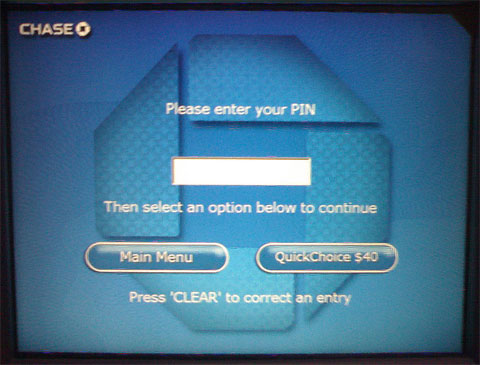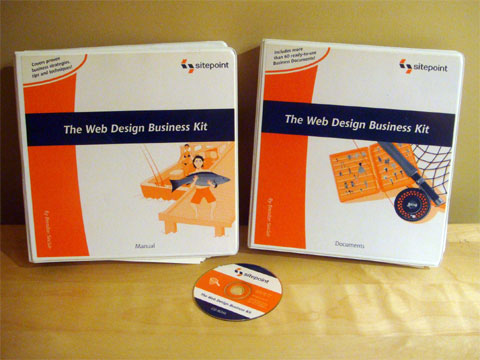Selling The Web Design Business Kit from SitePoint on eBay
It has served me well, and now it’s time for it to be in the hands of a start-up Web design and development business. I am talking about The Web Design Business Kit from SitePoint, which I have just posted for sale by auction on eBay. Below is a photo of the 2 binders and CD-ROM which make up the Kit.
The Kit consists of processes and procedures for owning and operating a Web design and development business. It is a step-by-step process that takes you through the business process of building a Web site and is supported by documentation and files in Excel and Word you can use right away in your business. Note the files are in Australian MS format but can easily adapted to US format. I purchased the Kit brand new a few years ago and learned quite a bit from it. The version 2.0 of this sells for almost $250.00. The content in the Kit is timeless.
Did you enjoy reading this? You are welcome to subscribe to The Hot Iron by RSS feed or by email.
When Navigation Is Not Necessary
The term navigation relates to getting from one place to another. With roots in sailing, it has been applied in other means of travel – like in driving – as well as other means of finding something – like in Web sites. The navigation of a Web site or computer application can mean both the links that guide a user to get to different areas of a Web site or the process of using such navigation.
Over time, navigation has gotten more and more complicated as features and functionality is added. Sometimes we feel like we should be donning a ship captain’s uniform to find what we want to do! There are ways around this. Providing a search function can allow a user to bypass traditional Web or application navigation to get directly to the content. Placing the most commonly used functions up-front is another way to get people quickly to what they want. By knowing your users and what they want most often, you can make such improvements to get people in and out of your computers quickly.
Then there is the option of removing navigation altogether of a user wants to use a key function. A great example of this is what I now use quite often with Chase Bank ATMs. As you can see from the picture of the PIN entry screen of the ATM, you can choose to login and go to the main menu, or bypass it altogether and withdraw a preset amount of case from the ATM. Where the process of a “fast cash” option is nothing new (I recall using it at BayBank back in the 80’s), here a second button allows you to login, get the amount you set previously (and is conveniently displayed for you) and get out. All this, without seeing any menus.

More than likely Chase looked at how people use their ATMs and made this determination. In Web sites or application, look at the usage analytics and determine the most-used features. If you’re not tracking analytics, do it now! Your applications can tell you more about what people want to know about you or buy from you, they can tell you about the people who are doing so.
Did you enjoy reading this? You are welcome to subscribe to The Hot Iron by RSS feed or by email.


